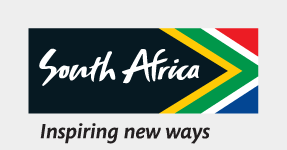By creating an account, I agree to the
Terms of service and Privacy policy
Choose your country and language:
Africa
Americas
Asia Pacific
Europe
GGlider pilots worldwide know that South Africa has wonderful soaring weather, and it doesn’t get better than the 800km-plus flying area east of Bloemfontein in the Free State, all the way to Aliwal North, Victoria West and on to Tswalu Kalahari Game Reserve in the Northern Cape.
Gliding (also known as soaring) involves flying an unpowered aircraft that makes use of air currents to stay airborne. At an altitude of 12 000 feet (3 700m), you are completely alone in the sky, communing only with the clouds and riding updrafts and downdrafts over hundreds of kilometres.
Glider pilots will tell you there is no better feeling, which is why they travel the world in search of the magical trough line (where dry and wet air meet and clouds develop), perfect for gliding.
‘Plenty of glider pilots from Europe and the United States come to South Africa in November, December and January to experience our magnificent conditions,’ says Martin Lessle, who headed the Gariep Gliding Centre in the Gariep Dam area of the Free State from 2005 to 2012.
Martin, who says soaring is in his blood (his father brought him up on gliding), is now based at the airfield in Douglas, 100km south-west of Kimberley in the Northern Cape, because he has seen the trough line move closer to Kimberley each year.
‘It’s definitely to do with changing climates. There is still great gliding in Gariep, but it’s good to have options.'
The beauty for glider pilots coming to South Africa from Europe in the summer is that there is only one hour’s time difference, which means they don’t need to acclimatise. Those coming from different time zones, such as the United States, need about two days to reset their clock.
‘The pilots from overseas visit for about a week, and we have 8 good gliders available for hire, equipped with gear and a good tug aeroplane to get them launched,’ says Martin
Flying an average of 8 hours without fuel is an incredible feat. ‘You literally feel on top of the world,’ he adds. ‘For me – and it’s the same for most gliders – the most exciting experience is a very long task: flying far and high. In our air space, “far” is currently 800km and in 2013 we’re aiming for 1 000km.’
TTravel tips & planning info
Who to contact
Gliding Centre South Africa
Tel: +27 (0)82 442 5584
Email: glidinginsa@telkomsa.net
How to get here
The Gariep Dam is about 650km (about 7 to 8 hours' drive) from Johannesburg and about 200km from Bloemfontein (about 2 hours' drive). The Gariep area to Douglas is about 280km, or 3 hours by road. The trip from Johannesburg to Douglas is about 615km – at least 7 hours' drive. Kimberley to Douglas is 100km, which will take you about an hour to drive. Johannesburg to Kimberley is 480km – a 5-hour drive at least. Bloemfontein to Kimberley is 164km, a drive of about an hour and a half.
Best time to visit
November, December and January are the best gliding months.
Around the area
Both the Gariep Dam area and the town of Douglas offer excellent water sports and outdoor activities, such as game viewing, river rafting and fishing.
Get around
Self-drive is best. Flights are available to Bloemfontein and Kimberley and both have car-hire facilities.
What will it cost?
It costs anywhere from R24 000+ to hire a glider for a week, depending on the type of aircraft. You'll have to factor in transport (such as hiring a car) and accommodation on top of that.
Length of stay
One week for gliding and a few extra days to explore the area.
What to pack
Gliding gear. If this is too difficult to travel with it, speak to your provider about gear for hire.
Where to stay
There is a choice of guest houses and B&Bs in both the Gariep Dam and Douglas areas (the Gariep Dam is in the Free State; Douglas is in the Northern Cape).
What to eat
Most of the accommodation options in South Africa offer meals, and breakfast is almost always included in overnight rates. Alternatively, you can purchase food at the local supermarkets.
Related links

